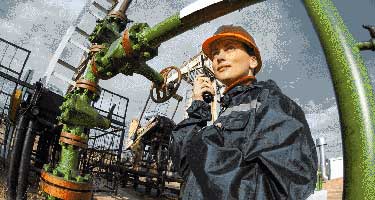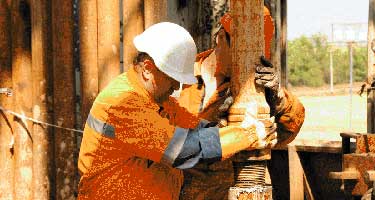Data Mining and the Future of Oil Extraction
Many analysts and economists share the same prediction: that the price of oil will stay under $60 per barrel through next year. That kind of slump requires those in the gas industry to aim for better oil and gas extraction efficiency and productivity in drilling rig operations in order to protect profitability. But keeping a rig efficient and compliant with worker and environmental safety regulations has in the past been difficult to monitor due to complex equipment setups, remote extraction locations, and more.
Until now. Today, large oil and gas companies like Shell, BP, and Chevron are all “tapping” into data using sensors installed in key locations to improve the extraction process. As the cost of sensors continues to go down, capturing and analyzing this data is becoming more accessible for smaller rig operators. What does all this data mean for the future of extraction? Check out the GoCanvas Application Store to find apps related to the Oil industry.

Check out even more resources

Manage Risk for Oil and Gas Companies With a Risk Assessment Checklist
Today, the challenges faced by the oil and gas industry are considerable. Effective business leaders and managers must thoroughly understand them to determine…

Solutions to Waste Management Issues For Oil & Gas Companies
Waste management compliance is important in every industry. The oil and gas industry, in particular, has a strong risk of waste emissions…

4 Ways Big Data is Transforming Oil and Gas
Oil and gas companies are getting smart about using the data they collect to gain insights and manage people, equipment, and worksites more effectively…
Connect with an Expert Today.
We’ll help you put together the right solution for your needs.
Text Version
DATA MINING AND THE FUTURE OF OIL EXTRACTION – Under constant pressure to increase efficiency and productivity, the oil and gas industry has turned to data capture and analysis to provide a window into what the future holds.
EVERYTHING WILL BE “SENSORED” – As the cost of sensors continues to go down, more and more onshore and offshore rigs are deploying sensor technology to detect information.
$7.74 BILLION: Estimated value of the global pressure sensors market by 2018
150,000 MILES OF PIPELINE = 10 TERABYTES OF DATA
Three times: Amount the fiber-optic sensor market will grow over the next three years, to $1.5 Billion in 2018 with 70% coming from oil and gas. And that influx of sensor data will drive demand for more data analysts to make sense of it all.
Less than 1%: Amount of rig data currently made available to key decision-makers.
Less than 11,900: Number of new analysts needed to make sense of all the data being captured.
Less than 6 – 8%: Amount production could increase with better data analysis.
Production optimization will no longer be a “nice-to-have”. The aging giant fields that comprise just 1% of the total number of oil fields are responsible for 60% of total production, making more efficient extraction imperative.
6.5%: Average decline rate of older OPEC “giant fields”.
Robotics will become commonplace. Disasters like Deepwater Horizon have encouraged major oil firms to invest in automation to help ensure safety and maintain productivity.
2,600: Number of barrels of oil projected to flow per day from Maersk’s unmanned offshore platform, operational since March 2015.
Digital Breakthroughs will go above ground. To lower costs and stay productive, firms will apply digitization, robotics, and analytics to water and waste management, shipping, and more.